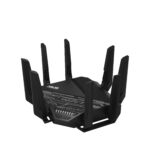Buying a used GPU that was used for mining can be risky. Many miners run their graphics cards non-stop at high temperatures. This can cause wear and tear on the components. Used mining GPUs may have a shorter lifespan and could fail sooner than expected – and you get no warranty coverage.
But not all used mining GPUs are bad. Some miners take good care of their equipment and use proper cooling and don’t overclock the cards. These GPUs may still work well for gaming or other tasks. The key is to check the card’s condition before buying.
Prices for used mining GPUs can be low. This makes them tempting for budget-conscious buyers. But it’s important to weigh the risks against the potential savings. Buyers should ask about the card’s history and test it if possible.

Should You Buy a Used GPU from a Cryptocurrency Miner?
Graphics cards (GPUs) are essential for gamers and creative professionals, but their prices can be steep. The cryptocurrency mining boom has added another layer of complexity to the GPU market, with miners often selling their used cards at enticing prices. But is buying a used mining GPU a smart move? Let’s weigh the pros and cons to help you make an informed decision.
The Appeal of Mining GPUs: Potential Cost Savings
The most significant advantage of buying a used mining GPU is the potential for cost savings. Miners often sell their cards at lower prices than the original retail price, especially when the cryptocurrency market is down. This can be tempting for budget-conscious buyers looking to get more graphical power for their money.
The Risks: Potential Pitfalls to Consider
While the lower price tag is enticing, there are some risks associated with buying a used mining GPU:
- Wear and Tear: Mining involves running GPUs at high intensity for extended periods, potentially leading to increased wear and tear on the card’s components. This can shorten the card’s lifespan and increase the likelihood of malfunctions.
- Overclocking and Modifications: Miners often overclock their GPUs to maximize performance, which can further stress the card and potentially damage it. Some miners might even modify the card’s BIOS or cooling system, which can void warranties or cause instability.
- Warranty Concerns: Used mining GPUs might have limited or no warranty coverage, leaving you with little recourse if the card fails.
- Uncertain History: You often have limited information about the card’s usage history, including the mining intensity, environmental conditions, and maintenance practices.

Mitigating the Risks: Tips for Smart Buying
If you’re considering buying a used mining GPU, here are some tips to minimize the risks:
- Buy from Reputable Sellers: Choose sellers with positive feedback and a history of selling reliable hardware.
- Ask Questions: Inquire about the card’s usage history, mining intensity, and any modifications that have been made.
- Inspect the Card: If possible, inspect the card for physical damage or signs of excessive wear and tear.
- Test the Card: Before finalizing the purchase, test the card to ensure it’s functioning correctly and performing as expected.
- Negotiate the Price: Factor in the potential risks and negotiate a price that reflects the card’s condition and warranty status.
Alternatives to Consider
- New GPUs: While more expensive, new GPUs offer peace of mind with warranties and guaranteed performance.
- Refurbished GPUs: Refurbished GPUs from reputable sellers can offer a balance of cost savings and reliability.

Should You Buy a Mining GPU? A Quick Guide
| Pros | Cons |
|---|---|
| Potential cost savings | Increased wear and tear |
| Potential overclocking and modifications | |
| Limited or no warranty coverage | |
| Uncertain usage history |
Key Takeaways
- Used mining GPUs may have a shorter lifespan due to constant use
- Some well-maintained mining GPUs can still perform well for other tasks
- Buyers should carefully evaluate a used GPU’s condition before purchasing
Evaluating the Condition and Lifecycle of Mining GPUs
Mining GPUs face unique stresses that can affect their performance and lifespan. Buyers should check for signs of wear and run tests to ensure the card still works well.
Understanding the Impact of Mining on GPU Lifespan
Mining puts heavy loads on GPUs for long periods. This can lead to faster aging of some parts. The fans often wear out first from constant use. Other components like capacitors may also degrade faster.
But many miners take good care of their cards. They keep them cool and clean to extend their life. Some even underclock the GPUs to reduce strain.
Most mining GPUs don’t show much reduced ability. With proper care, they can still perform well for gaming or other tasks.
Identifying Common Wear and Tear in Used Mining Cards
Look for physical signs of heavy use:
- Dust buildup inside the card
- Worn or noisy fans
- Discolored circuit boards
- Missing screws or bent parts
Check the card’s appearance carefully. Ask for clear photos if buying online. Be wary of sellers offering many GPUs at once. This often points to mining use.
Make sure all ports and connectors are intact. Test the card in person if possible before buying.
Conducting Performance Benchmarks and Stress Tests
Run benchmarks to check the GPU’s performance. Compare results to what’s expected for that model when new.
Use stress tests like FurMark to check stability under load. Watch for crashes, artifacts, or overheating.
Other useful tests:
- 3DMark for overall GPU performance
- Heaven or Valley for DirectX performance
- Games with built-in benchmarks
Monitor temperatures during tests. High temps may mean worn thermal paste or damaged coolers.
If the card passes these tests, it’s likely still good for gaming or other GPU-heavy tasks.







